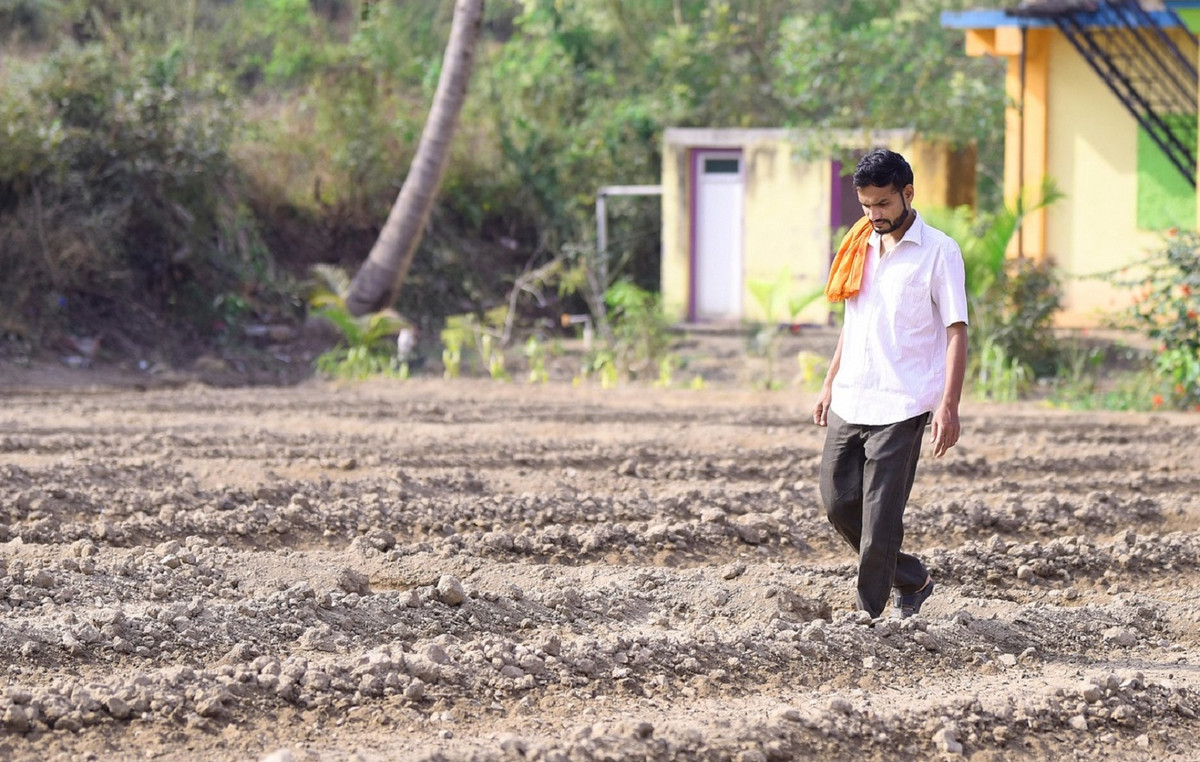The moon has some new stories to tell. Scientists have published the first detailed analyzes of the historic array of lunar soil and rocks that China recovered from the far side of the Moon this year.
Chang’e-6, the first mission to return soil from the far side of the Moon, collected 1.9 kilograms of lunar soil via a robotic probe in June before returning to Earth, a scientific feat that cemented China’s place as a of the world’s main space powers.
The volcanic rock contained in the sample dates back 2.8 billion years, suggesting that the unmanned mission’s landing site was volcanically active at that time, according to two articles published Friday in the journal Science and Nature. The eruption represented a relatively recent episode of lunar volcanic activity not known from the study of samples collected from the near side of the Moon by NASA’s Apollo program and Russia’s Luna missions, the new research found.
The age of the far-side basalt rock is surprisingly young compared to previously studied near-side samples, which were all more than 3 billion years old, said Clive Neal, a professor at the University of Notre Dame and co-author of the Science paper. However, more recent near-side samples collected by China’s Chang”e-5 lunar mission in 2020 were dated at 2 billion years old.
The research also showed that the samples did not carry the signature of radioactive elements found in many Apollo-era samples.
“The relatively young age of the basalts (recovered by Chang”e-6) is surprising, along with the composition being virtually devoid of radioactive elements,” Neal said in an email. This “raises the question ‘how and why these magmas were generated’”.
“This was the same question that is still being asked about the Chang”e 5 basalts,” he added.
‘Unsolved mystery’
The first soil samples from the Moon, collected during the Apollo missions of the 1960s and 1970s, effectively rewrote science textbooks, revealing how the Moon formed and that it was once covered by an ocean of magma.
“One of the concerns, you know, we developed this detailed story (about the Moon) from all the Apollo results,” said Richard W. Carlson, scientist emeritus at the Carnegie Institution for Earth and Planetary Science Laboratory in Washington, DC. He was not involved in the new research. “And one thing that has always been in the back of my mind is whether this only applies to the Apollo area of the Moon,” Carlson added.
NASA’s Apollo missions landed in six locations relatively close to the Moon’s equator between 1969 and 1972, while the Chang’e-5 spacecraft landed in the northwest corner of the Moon. The Chang’e-6 lunar probe landed in a location within the extensive South Pole-Aitken basin, an impact crater formed about 4 billion years ago.
Now, samples from Chang’e-6 could help scientists explore differences between the near and far sides of the Moon that had previously been detected by remote sensing, by unraveling the volcanic history of the far side, Qiu-6 said. li Li, corresponding author of the Nature article and research professor at the State Laboratory of Lithospheric Evolution of the Chinese Academy of Sciences.
The near side of the Moon always faces Earth — and therefore has been easier to study — because the Moon takes the same amount of time to complete one orbit as Earth and rotate around its axis: about 27 days . Previous research based on remote sensing has revealed that the far side of the Moon has different topography, a thicker crust, a different distribution of basalt, as well as different concentrations of thorium, a radioactive element found in rock, Li said.
“The asymmetry between the near side and far side of the Moon remains an unsolved mystery,” he said in an email.
Li and his team studied 108 fragments of basalt contained in two small samples of soil from the far side of the Moon. Most of the fragments formed about 2.8 billion years ago, researchers discovered by studying the decay of lead isotopes in the samples . However, a fragment formed about 4.2 billion years ago, according to the research. The basalt fragments studied in the Science article were also 2.8 billion years old. Together, the findings from the two studies suggest that the moon remained in a liquid state for a longer period of time than initially thought, Carlson said.
“We don’t really have a good idea why the Moon remained in a liquid state for so long,” Carlson said in an email. “The moon is a relatively small body and should have cooled quickly.”
Both papers noted that the samples were not rich in KREEP, an acronym that stands for potassium (chemical symbol K), rare earth elements (REE), and phosphorus (P), found in other Apollo-era lunar samples. KREEP is a heat generator, Carlson said, and its existence would explain why volcanism has continued on the moon for so long. He said it is interesting that the Chang’e-6 samples were devoid of radioactive elements.
Chang’e-6 Sample Future Research
These initial analyzes of lunar soil samples raise questions that will take more time and the study of additional samples to answer, Neal said. The China National Space Administration said scientists outside China could request to study the soil samples two years after the specimens arrived on Earth, following a precedent set by NASA decades ago with the Apollo missions.
The Apollo lunar flights ended in 1972, but NASA said it receives about 60 research requests for samples a year. More than 2,500 scientific articles have been published through 2015 using Apollo data, according to the space agency.
Li said foreign researchers like Neal can now collaborate with their Chinese colleagues as part of a team. Neal said he was “pleasantly surprised” to be asked to be part of the project. However, he explained that he could only work on the research “outside office hours” to avoid violating the Wolf Amendment, a 2011 US law that prohibits NASA from using government funds for bilateral cooperation with China or its agencies without authorization. Congress or the FBI.
NASA Administrator Bill Nelson suggested in July that research on the Chang’e-6 samples may not violate the Wolf Amendment. The space agency declined to comment on the studies but said it is coordinating with American researchers who have requested access to the Chang’e-5 lunar samples. “The agency is aware that as part of the application process, CNSA has interviewed international loan applicants but has not yet announced the selections,” NASA said.
This content was originally published in China reveals unprecedented analysis of samples from the far side of the Moon on the CNN Brasil website.
Source: CNN Brasil
Charles Grill is a tech-savvy writer with over 3 years of experience in the field. He writes on a variety of technology-related topics and has a strong focus on the latest advancements in the industry. He is connected with several online news websites and is currently contributing to a technology-focused platform.







